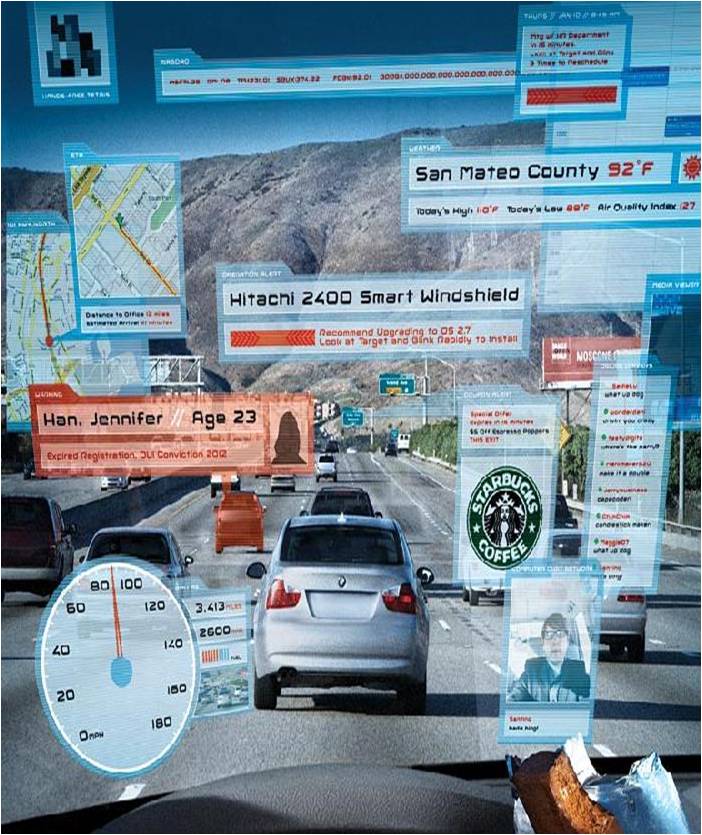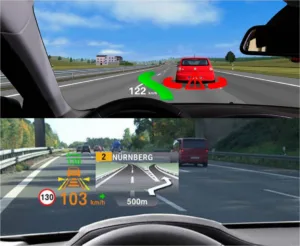Head Up Displays (HUDs) are entering the automobile industry at an impressive speed. Not so long ago HUDs were the exception rather than the rule in automotive instrumentation. Now, many new models in the mid-size class and above have at least a HUD option. Besides the HUD installed by the OEM, there are also aftermarket models that add this functionality to almost every car on the market today.
While we may look at the HUD as a new technology driving the display industry, the introduction of the HUD in the automotive world is being sold to the consumer as a tool for increasing driving safety. There are two arguments that are used to promote HUD technology for cars. One is that it allows the driver to keep his eyes on the road and the other is that jet pilots have been using this technology for decades.
Both arguments suggest that the use of a HUD in the car is not only safe, but improves road safety in general. An article in The Legal Examiner by Joel Feldman takes a deeper look at his assumption. Based on earlier research by NASA, he concludes that head up displays may not be all that safe. It all goes back to something the NASA report calls ‘attention capture’. In this instance pilots lose their focus on what is important and instead focus on the symbols displayed by the HUD. The report lists in detail what contributes to this negative impact on safety during flight.
To make it very clear, this report is over 10 years old and much research has led to a safer HUD being used in planes today. The key issue here is that there was a lot of research done to explore what works and what doesn’t. In the automotive world, we seem to approach the whole safety question with more and more colorful imagery, something that seems questionable, at best, after reading the NASA report.
The following images are examples of what we can find in today’s HUDs.
Source: BMW
Both images come from BMW as one of the early innovators in this field. While no one would see any potential distraction stemming from the HUD in the upper part of the image, I am not so sure about the HUD in the lower part. This seems to be the same HUD but with different imagery. At least it appears that BMW is evaluating what will work and what not.
The following image is the answer to what will not work in car while on the road.
 Source: Hitachi
Source: Hitachi
Besides the Starbucks advertisement almost completely hiding a car from the drivers view, there is a lot I can see wrong with this image. Based on the results of the NASA research there is the question of who is taking responsibility to develop safety guidelines for HUDs in motor vehicles. Other than in the aviation segment, which approaches safety questions on a global level, automotive rules often fall under a country’s jurisdiction. We can expect that every country will have a different view on what is safe and what is not. – Norbert Hildebrand

